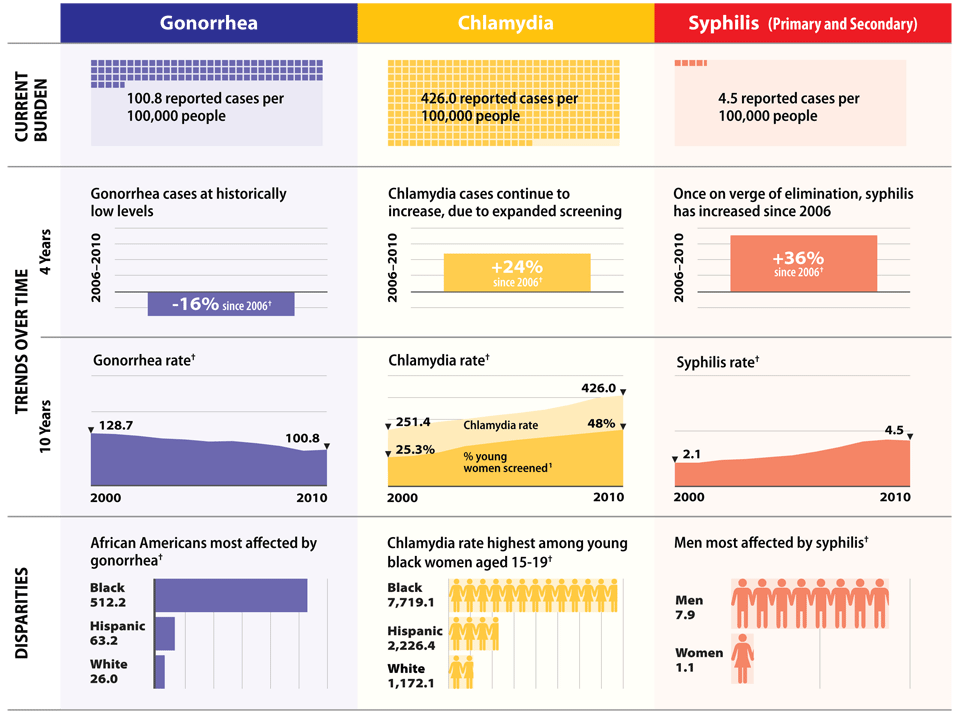STD Trends in the United States: 2010 National Data for Gonorrhea, Chlamydia, and Syphilis
This web page is archived for historical purposes and is no longer being updated. Newer data is available on the STD Data and Statistics page.
Snapshot: Sexually Transmitted Diseases in 2010

† All rates are for reported cases per 100,000 people
1 Screening data are from the Healthcare Effectiveness Data and Information Set (HEDIS), which assesses the proportion of sexually active females between the ages of 15 and 25 screened for chlamydia. Available at www.ncqa.org
Source: CDC, Sexually Transmitted Diseases Surveillance, 2010.
- Page last reviewed: November 22, 2010 (archived document)
- Content source:


 ShareCompartir
ShareCompartir